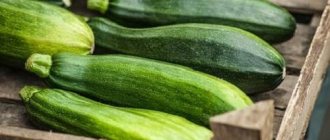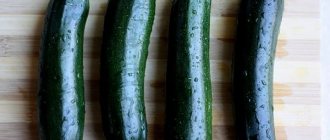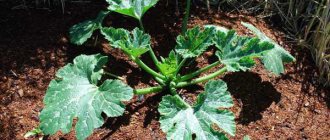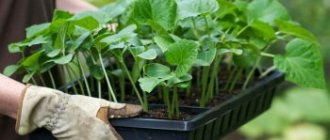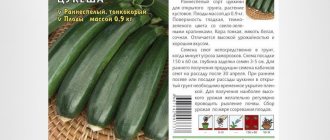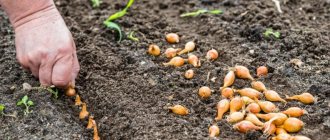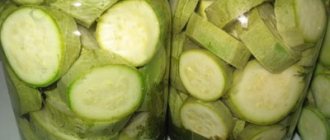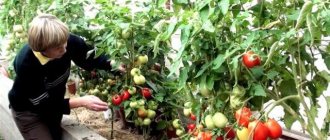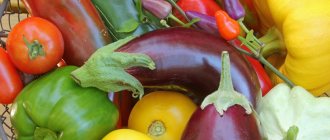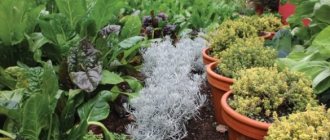Description and features
Many people are interested in what zucchini is - a separate vegetable or another name for zucchini. In fact, this product is a type of zucchini, which, in turn, is recognized as a variety of pumpkin. These two vegetables have a very similar appearance, however their descriptions will differ.
Zucchini
Zucchini is a small vegetable, most often oblong in shape. It has a thin skin that is green, black or yellow. They are considered green-fruited zucchini. Often they do not grow more than 15 cm in length.
Kabachkov
Zucchini is a predominantly elongated fruit of yellow, green or white color. The peel is hard, becoming softer when ripe. The size of individual specimens can reach more than 30 cm in length.
Did you know? The name "zucchini" comes from the Italian "zucca", which translates to "pumpkin". The name “zucchini” has a Turkic etymology, but is also translated as “pumpkin”.
There are also various varietal forms that have their own distinctive characteristics. For example, there are round varieties characterized by small fruit size.
Planting zucchini
Zucchini can be grown in two ways - seedlings and seeds. Each of them has its own characteristics.
Planting seedlings
A tender and heat-loving crop in regions of risky agriculture is best grown by seedlings. But it’s better not to rush into sowing seedlings, especially if you live in regions with a cold climate. As a rule, sowing is carried out in the middle or end of April, with the expectation that transplantation into the ground should take place in 25 - 30 days.
Zucchini seeds do not lose their ability to germinate for 10 years. But 2-3 year olds are considered the highest quality.
2 - 3 year old seeds have good germination
Seedlings on the windowsill
Before planting, treat the seeds to improve their germination. But first, sort them out, separating the empty seeds. Then heat the selected material. The easiest way is to wrap the seeds in cotton cloth and place them on the central heating radiator and let them lie there for 3 days. But you can keep them at a temperature of 50 – 60°C in the oven for 4 – 6 hours.
In my opinion, this method is more dubious. There is a risk of simply frying them or not warming them up enough, because not everyone’s oven accurately shows the desired temperature.
And then you need to tinker a little, but the result is worth it.
- To disinfect the seeds, soak the seeds for half an hour in a weak solution of potassium permanganate. Then rinse.
- The seeds will spend the next day in a solution of boric acid (0.002%). This procedure will increase germination, enhance initial growth, and increase the yield by 10 - 20%. You can purchase various growth stimulants in a specialized store; they also give excellent results.
- Then comes hardening. First leave the seeds wrapped in a damp cloth at room temperature for 6 hours. Then place it on the bottom shelf of the refrigerator for 1.5 days.
In order for the seeds to delight with friendly shoots, they need to be treated before sowing
While the seeds are being processed, do not waste time, but prepare everything you need for sowing. Prepare the soil mixture yourself by mixing turf soil, humus, coarse sand and low-acidity peat in equal proportions. Do not forget to disinfect the prepared composition by spilling light pink potassium permanganate. If you don’t have the necessary components on hand, you can buy soil for seedlings at a flower shop, but you should still add sand to it.
It is advisable to plant the seeds in separate containers, as the delicate roots may be damaged during picking. You can prepare any container you have on hand - disposable cups (but not the smallest ones), seedling pots, peat cups or special tablets for planting, after soaking them in water.
Planting and care
- Fill the container with the prepared soil mixture. Spill generously and sow 1 – 2 seeds into each container. Plant to a depth of no more than 3 cm. Place the seeds flat.
- Cover the cups with a plastic bag and place them in the brightest place. For normal germination, seeds need a temperature within 20 – 22°C.
- After 5 days the seeds will germinate. When all the seedlings come out, the bag can be removed so that the seedlings do not suffer from high humidity.
- To avoid stretching the seedlings during the first 10 days after emergence, lower the temperature - during the day from 15 to 18°C, at night from 12 to 15°C. Humidity is not lower than 60%, but not higher than 80%.
- Water moderately, keeping the soil moist, but do not overwater. Water only with warm water (25C°)!
- Lighting should be maximum so that the seedlings do not stretch out.
Sowing seeds for seedlings - video
I grow seedlings on a south-facing window. The Crimean sun shines brightly, so I always shade the seedlings at noon. When refracted in window glass, rays can cause tender plants to wither and dry out the soil.
While the seedlings are growing, feed them twice. The first time is when the seedlings are 8 - 10 days old, the second time - after 2 weeks. Complex fertilizers are usually used as fertilizing. You can prepare a solution of superphosphate - 2 g per 1 liter of water.
Seedlings in a greenhouse or under film
If you follow all the above rules, then in a greenhouse or under a film you can grow strong seedlings in cups. Of course, you will have to tinker, especially on hot days. To prevent the seedlings from rotting, you will need to open the shelters slightly, but do this only on the leeward side. But such seedlings will be more hardened than indoor ones.
Transplanting seedlings into the ground
The time for transplanting seedlings into an open bed should coincide with suitable weather conditions. Tender seedlings cannot stand the cold, so the ground should be warmed to 12°C at a depth of 10 cm. This weather occurs in late May - early June. Do not forget to harden the home seedlings 1.5 - 2 weeks before transplanting into the ground, taking them outside and gradually increasing the time spent in the air.
If you are guided by folk signs, then the timing of planting seedlings is determined by the blooming dandelions.
Zucchini beds are prepared in a special way. Choose the most illuminated area, since the plant should be provided with the maximum amount of heat and light. Thanks to this, the seedlings quickly begin to grow and outstrip even fast-growing zucchini.
- Italian zucchini prefers loam with low or neutral acidity, the main advantage of which is fertility and good looseness. In the fall, the selected area is cleared of remnants of vegetation. Mark the direction of the beds - from south to north. Planting pattern - 70/70 cm.
- According to the planned pattern, holes are dug 25 - 30 cm deep and 40/40 cm wide. Collected plant debris - weeds, tops, fallen leaves, twigs - are placed at the bottom of the hole. Do not use the remains of diseased plants! During decomposition, such a substrate will not only warm the root system, but will also become an additional source of nutrients.
- In the spring, when conditions are favorable for transplanting seedlings into the ground, take 1 tbsp. l. double superphosphate, urea, potassium sulfate (you can do without it), half a liter jar of wood ash. Mix everything well with the soil and fill the holes. It turns out to be a small mound.
- The middle of the mound is spilled with a warm solution of potassium permanganate (1.5 g per bucket of water), the earth will settle, and seedlings are planted in the creamy mass. Transplantation is carried out using the transshipment method so as not to damage the fragile roots.
- Then cover the planting with film. But condensation often collects under the film and humidity rises. This is detrimental to seedlings, so air them regularly, lifting the film in the warm season.
Transplanting seedlings into open ground - video
I make it a little simpler, in my opinion. To cover the beds you will need a lot of film. Therefore, I plant seedlings under 6-liter plastic water bottles, after cutting off the bottom of them. I bury each bottle in the ground while it is wet; this is very easy to do. To ventilate the seedlings, I simply remove the lid. When the young plant takes root and gets stronger, I remove the bottle.
Instead of covering material, you can use plastic bottles
In regions with harsh weather conditions or in areas with heavy clay soil, it is recommended to plant zucchini in high beds. In such structures, the soil warms up faster, which means the zucchini will feel comfortable.
Planting seeds in the ground
This planting method is quite suitable for the southern regions and the Middle Zone.
- To grow zucchini by sowing seeds, select the site according to the same criteria as for planting seedlings. But prepare the ground a little differently. Of course, it is best to do this in advance - in the fall.
- Dig up the pre-cleaned soil to the depth of a spade bayonet, simultaneously introducing nutrients per 1 m² - 5 kg of organic matter, 25 - 30 g of potassium sulfate and double superphosphate.
In the fall, add nutrients under digging
- A week before planting, dig up the soil again, adding 20 g of ammonium nitrate per 1 m².
- Level the surface of the area with a rake so that there are no lumps.
In the spring, before planting, level the area
Before planting, seeds undergo the treatment already described above, but before planting in the ground they need to be given the opportunity to hatch in order to speed up the process of sprouting. To do this, wrap the treated seeds in a damp cloth, preferably gauze, and leave for a couple of days at room temperature. Be sure to check that the seeds do not overgrow. It should be planted in the ground as soon as a tiny green sprout appears from the seed’s nose. Overgrown seeds, in which the rudiments of cotyledon leaves appear, develop weaker.
Hatched seeds will germinate faster
They begin to sow seeds in an open bed from the end of May to the beginning of June, when the ground is sufficiently warmed up. The landing pattern is the same.
Step by step process
- Add a handful of humus and ash to the dug hole, mix well with the soil and spill with water.
- You can put up to 2 seeds in one hole.
- The depth of seed penetration into the soil depends on its density. In loose soil, the seed can be buried to 5–6 cm. If the soil is dense and heavy, then planting is done at a shallower depth—up to 4 cm.
- After planting, each hole should be mulched with dry soil so that the moisture evaporates more slowly.
In loose soils, you can plant the seed deeper; in dense soils, on the contrary, it is not recommended to bury it
When choosing a site for planting seedlings or seeds, do not forget about crop rotation. The following are considered good predecessors:
- cabbage;
- Solanaceae;
- peas.
But it is not recommended to plant after pumpkin, as the soil accumulates diseases that will threaten zucchini.
What is the difference between zucchini and zucchini?
Products that are so often confused with each other have quite significant differences. Since zucchini is more popular in our latitudes, not everyone knows how to distinguish zucchini from a common vegetable for us.
Appearance
At first glance, both types of vegetables are very similar, but there is a certain difference in their appearance.
You can distinguish one type from another by color, peel, size and quality of seeds inside the fruit:
| Difference | Zucchini | Zucchini |
| Color | Light color of the peel, mostly greenish, yellow or white. | Most often green or black, there are also yellowish fruits. The color is not necessarily uniform; variegated specimens with stripes or specks may occur. |
| Peel | Hard and thick, most often it needs to be removed before cooking. | Soft and delicate, does not need cleaning. |
| Size | They can grow to very large sizes in both length and width. Depending on the variety, there are also small round specimens. | Up to 15 cm in length. |
| Seeds | Large ones, it is advisable to remove them from the vegetable before cooking. | Small and almost invisible, it is not necessary to cut before adding the product to the dish. |
Did you know? The homeland of zucchini is Mexico, where local residents only consumed their seeds. In the 16th century, the product came to Europe and only in the 18th century did they begin to be prepared as a food product. Before this, it was grown as an ornamental plant.
Composition and calorie content
These products have almost the same composition.
Among the main useful components are:
- vitamin C;
- vitamin PP;
- vitamin B1;
- vitamin B2;
- vitamin B6;
- carotene;
- iron;
- potassium.
The only difference between zucchini is the presence of more vitamin C. The calorie content of zucchini is 23 kcal per 100 g. Zucchini has an energy value even less - 16 kcal per 100 g.
Taste qualities
The products also differ in taste. Zucchini is practically not consumed raw. Due to the dense pulp, this product is better subjected to heat treatment.
Zucchini is quite often used in its raw form. The reason for this is the unusually delicate taste of the vegetable. The pulp is not as hard as that of zucchini, so it does not necessarily need to be fried, boiled or stewed.
Important! Healthy zucchini and zucchini are beneficial. If there is plaque or rot on the fruit, these products are prohibited for use.
Beneficial features
- Both types of vegetables have many beneficial properties:
- low calorie content allows them to be used on a diet and with proper nutrition;
- both vegetables have a beneficial effect on the digestive tract;
- thanks to beneficial microelements and a gentle effect on the body, these products are useful for almost all diseases;
- the pulp of their fruits can be used as the first complementary food for infants.
Growing conditions
The necessary growing conditions for both vegetables are different.
Zucchini is an unpretentious plant that does not require special care in the form of weeding and fertilizing. Irrigation of the soil is carried out only as needed, for example, in extreme heat. Moreover, the fruits can ripen by the end of September if a late-ripening variety is planted.
Zucchinis are very demanding. Their cultivation cannot be left to chance. The list of plant care procedures includes regular watering, fertilizing and weed removal. They also cannot tolerate cold weather and cannot be on the bush if temperatures drop below +5°C.
Storage
There is a difference in the shelf life of vegetables, which determines their shelf life. Zucchini does not last long and requires either freezing or quick consumption. Zucchini is a long-term product. Often it can be preserved in almost its original form until next year.
How to plant and grow seeds in open ground
To get a rich harvest , you need to find an open sunny place for zucchini, but zucchini adapts well to partial shade.
Zucchini sprout much earlier, but during the growth process, Italian relatives catch up with them and overtake them.
It is better to plant zucchini on high, fertile beds prepared in the fall, sprinkling the seedlings with sand or earth, while creating slight heating, since the plant is heat-loving.
To get an early harvest, they are planted in seedlings in well-warmed soil. Zucchini is less picky; they are planted with seeds and do not need shelter.
Watering zucchini in open ground is carried out 3-4 times a week during fruit formation. Zucchini likes to grow in moist soil.
A big plus when growing zucchini is that the plant does not need weeding, since the long vines that form it create shade in which weeds do not grow.
Zucchini is planted in seedlings, zucchini is planted with seeds and does not need shelter
Cooking recommendations
In general, both vegetables are interchangeable and can be used in the same dishes. Cooking instructions, however, will vary.
Regarding zucchini, you should pay attention to the following tips from experienced chefs:
- Young fruits will have the most delicate taste;
- a win-win option would be fried rings, stew, casserole and squash caviar;
- less common, but extremely tasty dishes are stuffed zucchini wedges, deep-fried cubes and risotto with this vegetable.
It is better to cook zucchini, paying attention to the following recommendations:
- All the recipes listed above are suitable for this product, including stuffing and deep-frying;
- they can be added raw to salads - the dish will have an unusual and pleasant taste;
- the raw product, cut into cubes, can be served along with carrots, celery and hot sauce - this appetizer is called pincimonio and is an excellent option for parties.
Important! Before cooking, vegetables should be washed and dried naturally or with a napkin.
Zucchini and zucchini are foods that have many different traits. However, these vegetables belong to the same species and have many positive characteristics. When prepared correctly, dishes made from these products will take pride of place on your table.
Useful properties and contraindications for eating vegetables
In terms of their chemical composition, zucchini and zucchini are very similar, although the latter is much easier to digest. Vegetables do not cause irritation to the gastrointestinal mucosa and stimulate intestinal motility. The presence of vitamin C promotes the production of collagen, which improves the condition of the skin. Vitamin A is useful for good hair growth, strengthening vision and teeth.
Important microelements contained in vegetables (potassium, calcium, magnesium, iron) are necessary for the functioning of the heart muscle, brain, and muscles.
The fibrous nature of the vegetable makes it an excellent adsorbent of toxins, and frequent consumption helps eliminate cholesterol.
Fruit dishes are indicated for obesity, as they contain a minimal amount of calories and help quickly saturate the body. They are also recommended for elderly people to normalize digestive processes, activate hematopoiesis, and prevent atherosclerosis.
Zucchini is an excellent diuretic, so an infusion of its flowers is recommended for use for edema. In addition, they have antiallergic and choleretic properties.
There are no contraindications to eating zucchini and zucchini, with the exception of individual intolerance to vegetables.
Harvesting
The fruits are harvested 1-2 times a week, cutting off with a knife along with the stalk. Zucchini squash, harvested at the stage of milk maturity (weighing up to half a kilogram), is eaten fresh, in salads and snacks. For storage, culinary processing, or traditional winter preparations in Russian cuisine, zucchini is collected in the technical maturity phase, i.e., when the fruit is ripe, but the seeds have not yet ripened. During storage, such zucchini ripen.
In order to obtain seeds, a fully ripened zucchini is removed when the plant's vines turn yellow and the stem begins to dry out. They are stored in the light in room conditions until February-March. Seeds are selected as the fruits turn yellow. One average zucchini contains 140-170 seeds.
White squash and zucchini: the difference
We will not downplay the merits of ordinary zucchini, but we will emphasize that the popularity of the “Italian9raquo; growing year by year. Let's figure out how zucchini differs from zucchini. This crop is more decorative, its vines are more compact, and the carved, pubescent leaves with bright zonal colors are impressive in size and brightness. But zucchini is valued for its rich, delicate and pleasant taste. These qualities make it possible to enjoy eating it raw, using it in salads and light snacks. This vegetable is also ahead of its fellows in the length of storage of the crop: its shelf life is quite high; in a cool basement, zucchini squash will last until mid-spring without losing its pleasant freshness and taste. Another very significant advantage that distinguishes this vegetable is productivity. Zucchini, compared to ordinary zucchini, produces more female flowers and, accordingly, ovaries.
External differences
Zucchini is always light in color, and zucchini plays different shades of green. It can be almost black, pleasing to the eye with interesting stripes or polka dots.
The bushes of the former spread widely, with many shoots and light leaves. And the second ones neatly stretch upward, the leaves are larger and darker.
Fruits by size
They all have an oblong shape. But they differ in length: the zucchini can reach 40 cm, and the Italian brother is barely a quarter of a meter.
Taste rating
Inside the zucchini, the pulp does not have a distinct taste and is somewhat harsh. Used only in cooked form.
Zucchini is proud of the aroma of its tender pulp, so there are no restrictions on its use in any form. It's just a matter of taste.
Skin
Zucchini (except for very young ones) are very tough and must be peeled. And dark vegetables are imperceptibly soft and easy to eat.
Seeds
Zucchini seeds are eaten along with the fruit - waste-free production. And his relatives will have to remove them in advance; they will be too noticeable in dishes.
Creating conditions
As is customary for Italians, give zucchini water, warmth, sun, and no frost. The local brother has no time for whims; he will quietly be content with the sun and good black soil.
Fruit preservation
Zucchini is stored for a long time in a dark, cool place; zucchini spoils faster.
Culture Preferences
Zucchini squash, like a true southerner, loves brightly lit areas, but also tolerates places with short-term shading. The plant grows well on loose fertile sandy loam with a neutral reaction. Preparing the soil for planting is carried out in the fall by digging up the bed, adding humus (10 kg), superphosphate (50 g) and wood ash (200-250 g) per 1 m2.
The best predecessors that previously occupied the site are legumes, nightshade or cabbage crops, but it is not recommended to plant zucchini after their pumpkin counterparts in order to avoid the development of diseases traditional for this family. If there is a shortage of space, when planting zucchini after any representative of the genus in the spring, the soil is generously shed with a solution of manganese.
